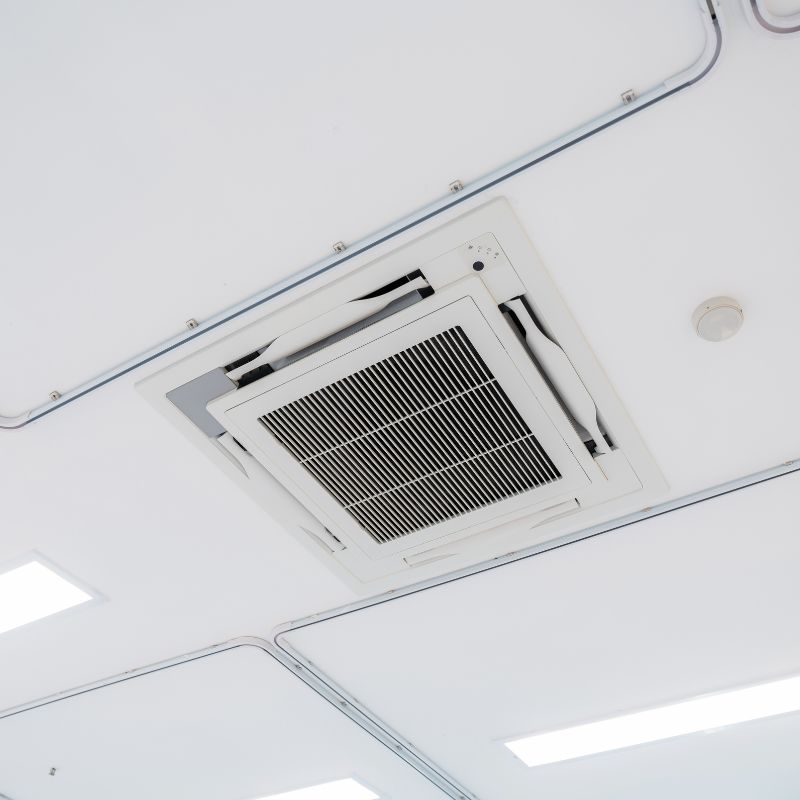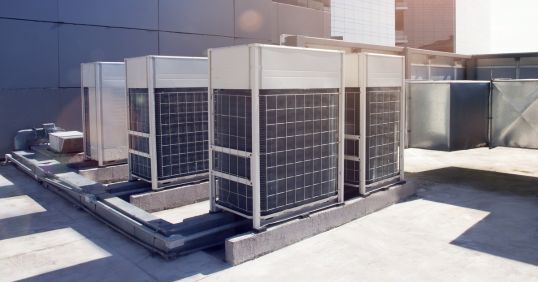VRF (Variable Refrigerant Flow) and VRV (Variable Refrigerant Volume) air conditioning systems are among the most advanced climate control technologies available today. Designed to offer energy savings, zone-specific temperature management, and flexible installation options, they provide practical advantages for residential and commercial buildings.
This article looks at the benefits of VRF and VRV air conditioning systems, covering how they work, where they’re most effective, and why they’re being chosen over traditional HVAC solutions.
Energy Savings That Make a Difference
VRF and VRV systems adjust the flow of refrigerant based on demand, which means they only use as much energy as needed. Their inverter-driven compressors run at varying speeds rather than switching on and off like older systems. This efficiency can reduce energy use by up to 30%.
For buildings with fluctuating heating and cooling needs throughout the day, these units deliver significant energy savings. It also means lower operational costs over time and reduced environmental impact.
Estimated Energy Savings
| System Type | Estimated Energy Savings | Annual Cost Benefit |
| Conventional HVAC | 5–10% | £100–£300 |
| Standard Split | 10–20% | £300–£600 |
| VRF/VRV System | 25–30% | £600–£1,200+ |
Multi-Zone Heating and Cooling
One of the strongest features of these systems is precise temperature control and the ability to simultaneously heat and cool different zones. Each indoor unit serves a specific room or zone, meaning people can set the temperature according to their preference.
Thanks to heat recovery, heat removed from a space that’s being cooled can be redirected to another that needs warmth. This feature not only improves comfort for different rooms but also makes the system more efficient overall. It’s particularly useful in commercial buildings where usage varies by zone, like offices, schools, or mixed-use developments.
Flexible System Design for Any Space
VRF and VRV systems come with a modular layout, making them suitable for both new builds and refurbishments. With minimal to no ducting and the ability to connect up to 64 indoor units to a single outdoor unit, they’re highly adaptable to awkward or tight spaces.
This approach allows for phased installation or future expansion without major disruption. Whether it’s a retrofit or part of a larger development, these systems fit in without needing major structural changes.

Lower Running Costs Over Time
Although VRF and VRV systems have a higher initial cost than some traditional systems, they tend to save money long-term. Energy efficiency, zoning, and fewer maintenance needs all contribute to lower operating expenses year after year.
The system’s ability to adjust output based on real-time demand also means less wear on components, leading to a longer lifespan and reduced repair costs.
Smart Controls and Monitoring
Modern systems come with digital control panels and can be integrated with building management software. Managers or owners can monitor temperatures, energy usage, and system performance remotely through apps or dashboards.
This makes it easier to maintain ideal conditions, plan maintenance, and spot changes in system behaviour early, minimising unexpected downtime or repairs.
Environmentally Friendly Performance
Modern VRF/VRV systems often use low-GWP refrigerants like R32, and thanks to their efficient operation, they produce lower carbon emissions. Their smart zoning also helps reduce wasteful energy consumption use by only conditioning occupied areas.
For property owners and developers who are aiming to meet sustainability targets or achieve building certifications, these systems are a forward-looking choice.
Quiet Operation
In noise-sensitive environments like libraries, clinics, or bedrooms, noise levels matter. VRV systems are designed to run quietly. Indoor fan coil units and outdoor compressors operate at low decibels, offering consistent comfort without background noise.
This makes them especially suitable for environments that require both performance and quiet.
Key Benefits of VRF and VRV Systems
| Feature | Advantage |
| Energy Efficiency | Uses only the power needed for each space |
| Zoned Control | Personalised temperature in every room |
| Installation Flexibility | Adapts to complex layouts and older properties |
| Heat Recovery | Heating and cooling at the same time |
| Smart Technology | Remote access, monitoring, and scheduling |
| Low Noise Levels | Ideal for sensitive spaces like bedrooms or clinics |
| Eco-Conscious Design | Lower emissions and greener refrigerants |
| Future Ready | Expandable and scalable |
| Maintenance Friendly | Early alerts and easier upkeep |
| Cost Efficiency | Significant savings over the life of the system |
Make the Smart Switch with Mechcool
VRF and VRV systems offer a well-rounded solution for those seeking efficient, flexible, and modern air conditioning. With zoned control, low running costs, and compatibility with both new and older buildings, they deliver performance without compromise.
If you’re planning an installation in Sussex or Surrey, our expert team at Mechcool can help choose and install the right HVAC system for your space. Get in touch to speak with a specialist and start building a more efficient and comfortable environment today.

